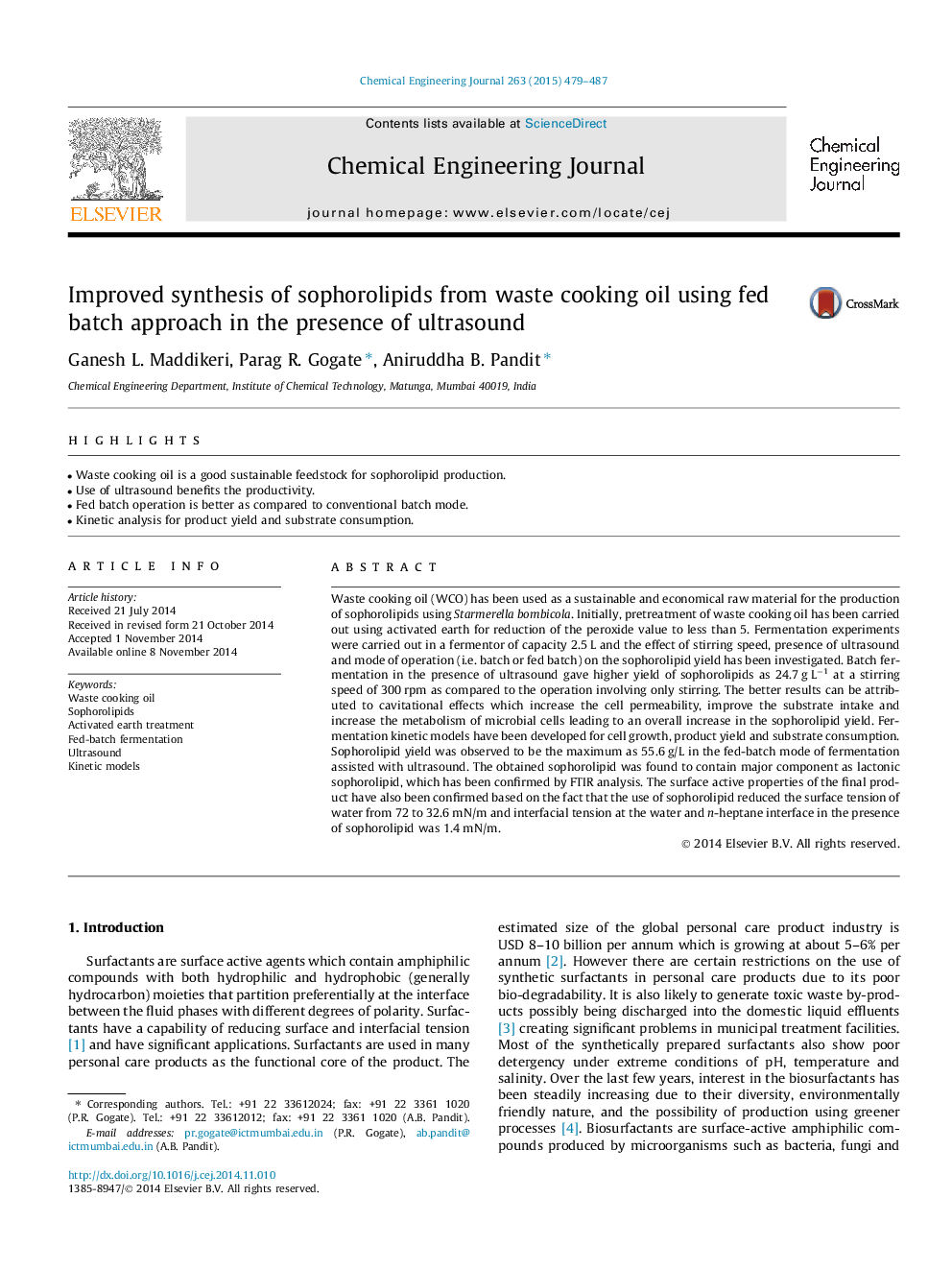| کد مقاله | کد نشریه | سال انتشار | مقاله انگلیسی | نسخه تمام متن |
|---|---|---|---|---|
| 146710 | 456376 | 2015 | 9 صفحه PDF | دانلود رایگان |

• Waste cooking oil is a good sustainable feedstock for sophorolipid production.
• Use of ultrasound benefits the productivity.
• Fed batch operation is better as compared to conventional batch mode.
• Kinetic analysis for product yield and substrate consumption.
Waste cooking oil (WCO) has been used as a sustainable and economical raw material for the production of sophorolipids using Starmerella bombicola. Initially, pretreatment of waste cooking oil has been carried out using activated earth for reduction of the peroxide value to less than 5. Fermentation experiments were carried out in a fermentor of capacity 2.5 L and the effect of stirring speed, presence of ultrasound and mode of operation (i.e. batch or fed batch) on the sophorolipid yield has been investigated. Batch fermentation in the presence of ultrasound gave higher yield of sophorolipids as 24.7 g L−1 at a stirring speed of 300 rpm as compared to the operation involving only stirring. The better results can be attributed to cavitational effects which increase the cell permeability, improve the substrate intake and increase the metabolism of microbial cells leading to an overall increase in the sophorolipid yield. Fermentation kinetic models have been developed for cell growth, product yield and substrate consumption. Sophorolipid yield was observed to be the maximum as 55.6 g/L in the fed-batch mode of fermentation assisted with ultrasound. The obtained sophorolipid was found to contain major component as lactonic sophorolipid, which has been confirmed by FTIR analysis. The surface active properties of the final product have also been confirmed based on the fact that the use of sophorolipid reduced the surface tension of water from 72 to 32.6 mN/m and interfacial tension at the water and n-heptane interface in the presence of sophorolipid was 1.4 mN/m.
Journal: Chemical Engineering Journal - Volume 263, 1 March 2015, Pages 479–487